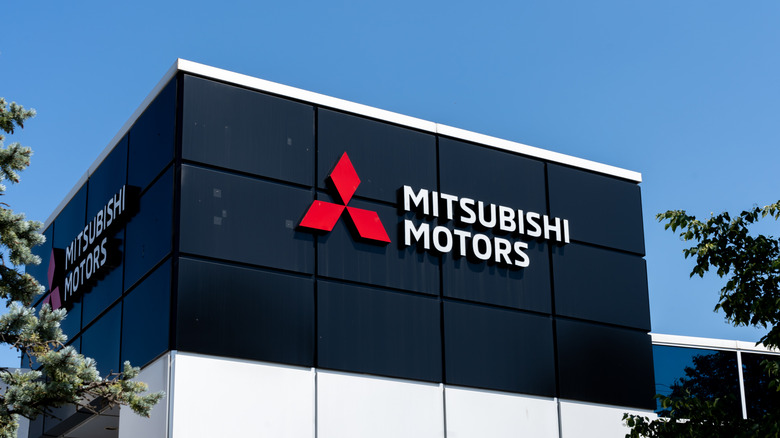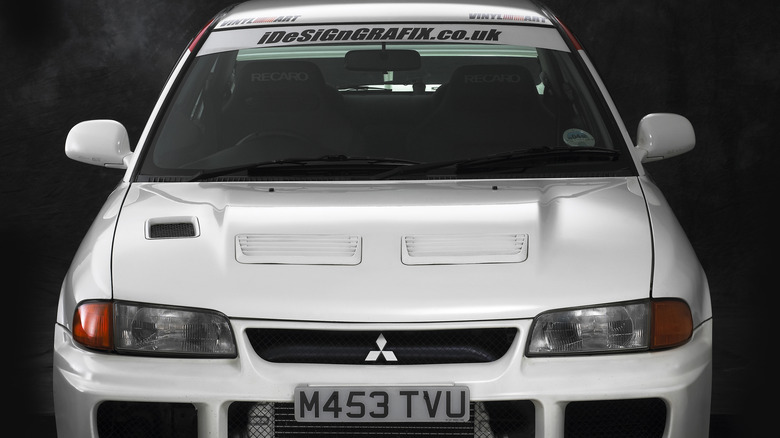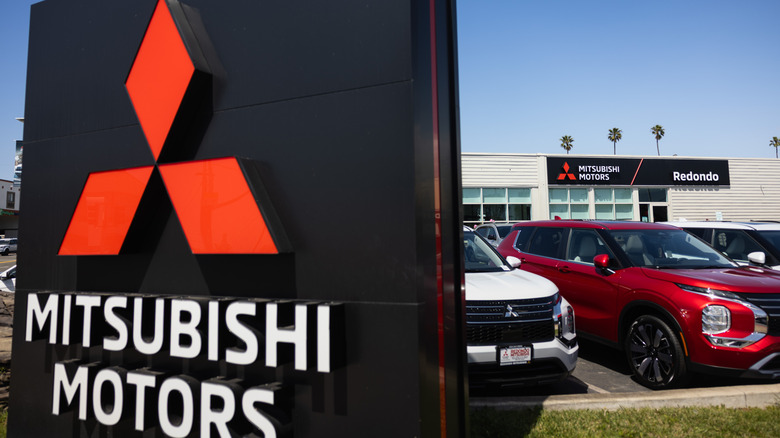Who Owns Mitsubishi And Where Are The Cars Made?
The Mitsubishi Group is a set of multinational interlocking corporations specializing in everything from trade and logistics, banking, food, heavy machinery, aircraft, and possibly their best-known products among automotive enthusiasts: cars. The publicly traded organization is headquartered in Chiyoda, Tokyo, and boasts an incredibly nuanced history dating back to the Tokugawa Shogunate in 1870. Today, Mitsubishi offers services throughout many industries, with Mitsubishi Motors, also known as MMC (Mitsubishi Motors Corporation), well-established around the world.
As for their North American branch, Mitsubishi Motors North America is headquartered in Franklin, Tennessee. The company ran exactly one production facility, located in Normal, Illinois; this plant ultimately closed its doors in April 2016 due to financial troubles, being sold to liquidator Maynards Industries. Today, that plant belongs to Rivian, and all Mitsubishi cars are produced either in Japan, Central and Southern Asia, or Brazil. However, Mitsubishi North America continues operating a research facility in Ann Arbor, Michigan, maintaining its presence in the United States and handling various research and corporate affairs. MMC is itself still under the greater Mitsubishi umbrella, of course. But due to the difficulties it sustained in the mid-2010s, MMC is now one-third of the Renault-Nissan-Mitsubishi Alliance, with Nissan taking de facto control of MMC in May 2016 with a 34% stake worth a staggering $2.2 billion.
Being such an old and broadly multinational corporation, Mitsubishi's story is just as interesting as their iconic products. Let's discuss the company's complicated history and exactly which cars are produced where.
A brief summary of MMC's history
The earliest direct ancestor of the Mitsubishi Motors Corporation we know today began life in July 1952 as part of an outsourcing agreement, creating knockoff Willys Jeeps simply called the "Mitsubishi Jeep." This truck was produced under the Mitsubishi Heavy Industries (MHI) Automotive Division banner, alongside a bevy of compact sedans and kei cars which capitalized on Japan's insatiable demand for small, practical transportation within its growing infrastructure.
The budding company soon developed into an automotive powerhouse, and by 1970, Mitsubishi had formally founded MMC. Each company within Mitsubishi retained autonomy; MMC effectively divided Mitsubishi's automotive production into a brand-new division, though it was still owned by MHI. In February 1970, Chrysler purchased a 15% stake in MMC, starting a partnership that would ultimately last decades, later known as Diamond-Star Motors.
Mitsubishi established its presence around the world through the 1970s and 1980s, partially owned by Chrysler at this point. By 1991, Mitsubishi bought out Chrysler's interest in the joint venture. The alliance quickly broke down, resulting in Diamond-Star Motors officially ending on July 1, 1995. With a tarnished reputation stateside, Mitsubishi rebranded its division as Mitsubishi Motor Manufacturing America and later Mitsubishi Motors North America (MMNA), producing vehicles in Normal, Illinois, for the next two decades. MMNA performed well throughout the 1980s and 1990s, but the company faced numerous financial hurdles and poor business decisions throughout the 2000s, and sales never truly recovered. This led to the closure of their North American production facility in 2015, and MMC's latest partnership under the Nissan banner.
Mitsubishi Motors North America today
While the North American production plant folded, Mitsubishi still boasts a formidable worldwide presence despite the setbacks of the 2000s-2010s. These days, MMNA continues operations in Tennessee after moving out of Cypress, California, in 2019. The entire Mitsubishi Motors head office is located in Minato-ku, Tokyo, with two indigenous production facilities: the Okazaki and Mizushima Plants, respectively. Okazaki produces the Outlander and Eclipse Cross for sale in North America alongside the GAC Mitsubishi plant in China for their market, with other models being JDM-only. As for the other USDM Mitsubishi, the Mirage (which is now discontinued) – that was actually produced in two locations: Thailand, in their Laem Chabang facility; and the Santa Rosa plant in the Philippines. Mitsubishi also produces powertrains for various models in plants located in Kyoto and Shiga, and hosts numerous research, marketing, and development centers around the world.
Sadly, the production lineup for Mitsubishi Motors' North American branch is a shadow of its former self, to say the least. The days of the 3000GT, Galant, Lancer Evolution, and other legendary models are long gone, with just about all sports car production discontinued worldwide. Plus, the modern lineup notably lacks a Montero, among many other famous models. But the corporation retains a large presence in other markets, so despite the relatively lackluster lineup as of late, Mitsubishi Motors remains a largely successful business. Although with the internal struggles going on at Nissan currently, it may see more dire straits before the situation truly improves.


